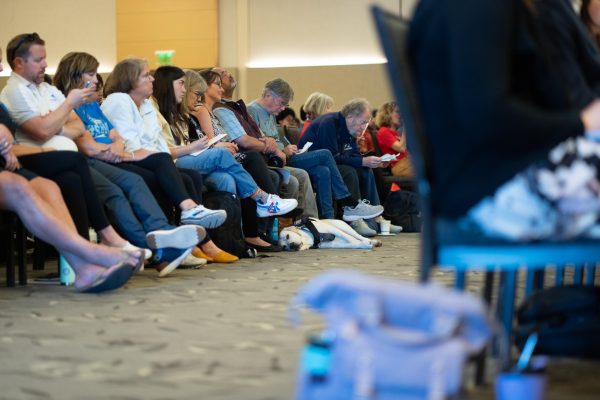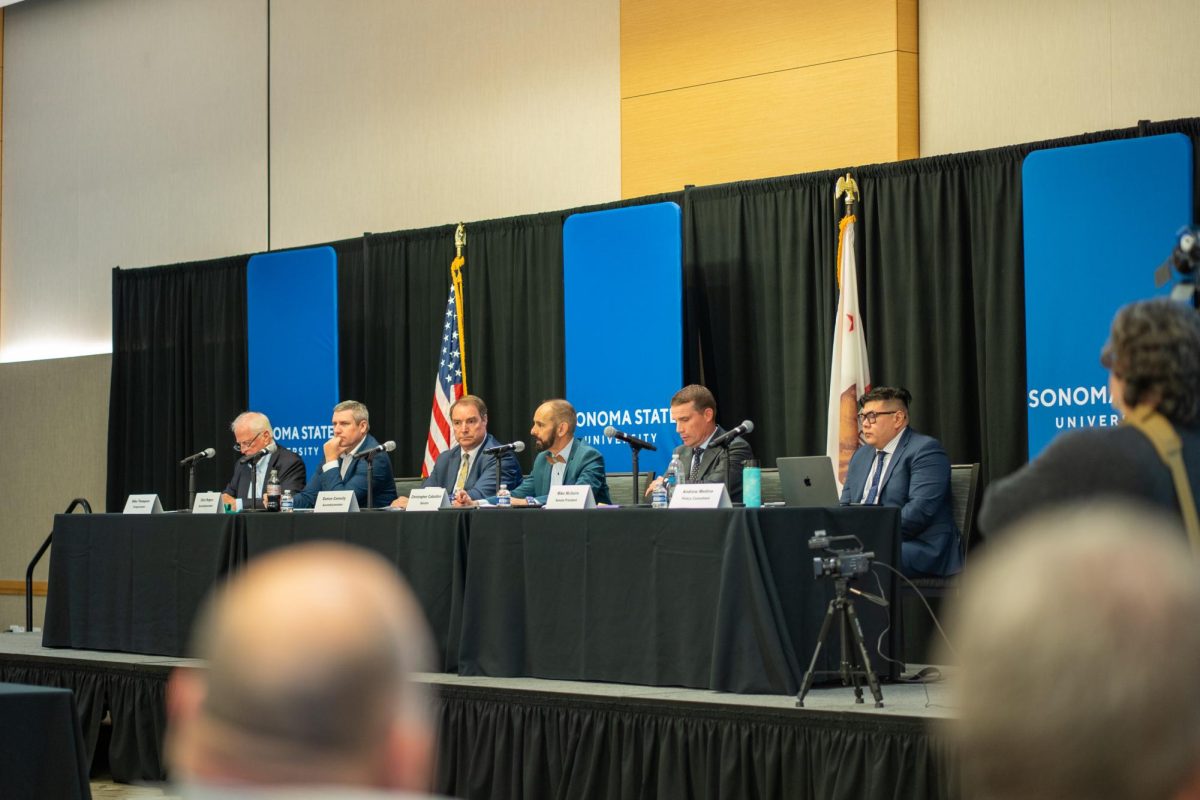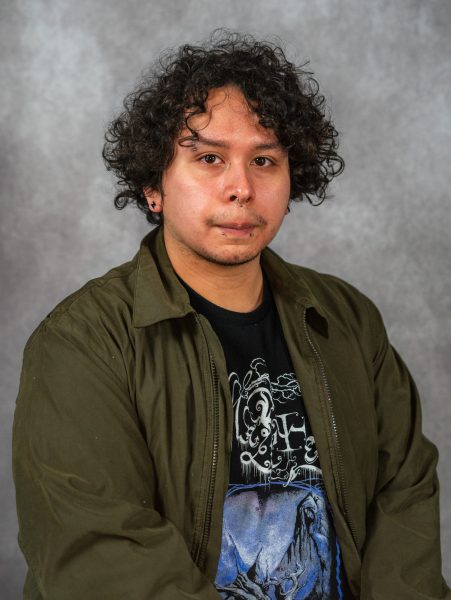California legislators were visibly aggravated and community members wept during a meeting to discuss Sonoma State University’s recently announced “Bridge to the Future” plan Monday afternoon at the Rohnert Park campus.
The contentious plan comes nearly four months after SSU’s administration announced a series of budget cuts to remedy the university’s $23.9 million budget deficit.
U.S. Rep. Mike Thompson, State Assemblymembers Chris Rogers and Damon Connolly and State Sens. Christopher Cabaldon and Mike McGuire addressed SSU administration, a handful of campus representatives and a downcast crowd for the second time since the cuts were announced.
Audience members clad in shirts that read “Save WGS!” and “SSU Athletics” embraced each other as they listened to comments from the community.
Announced April 7, the Bridge to the Future plan highlights five long-term goals for the university. Included are objectives for increasing the number of full-time equivalent students and reducing the budget deficit. Some tactics for achieving these goals are the implementation of new science-based programs and an emphasis on career and internship pathways.
The administration estimated the plan will cost $10 million.
Legislators, faculty and students raised red flags about the nine-page plan.
“Let’s say you invest the $10 million,” Connolly said. “Are we gonna have to be back here three or four years from now having this conversation again?”

The plan aims to “accelerate approvals and hiring for programs” in areas like health sciences, health profession studies, clinical lab science and social work. However, the administration has continually failed to explain how it will accomplish this, McGuire said.
He added that the state has invested $680 million in the CSU system over the last three years and this figure is expected to increase exponentially due to pushback from the schools.
“You’re coming to us and saying you can’t move forward with the $375 million the governor has proposed,” McGuire said. “[Yet] you’re saying that you can implement science-based programs, which are the most expensive to launch, with $10 million.”
McGuire was not alone in identifying inconsistencies in the plan.
“I don’t know how I’m supposed to tell my daughter to come to Sonoma State to study health sciences when [she] can’t also study ethics or the economics of the system in which our healthcare system operates,” said a man who identified himself as an SSU professor during public comments.
Additionally, the plan emphasizes expanding “career services and experiential learning opportunities” by implementing “a structured career pathway/internship pathway program for 60% of majors.” Some students and faculty said those programs already exist.
“The plan calls for more career-based learning and community engagement. That’s exactly what [women’s and gender studies] does,” said women’s and gender studies student Mallory Field. “Why would we eliminate a program that is the blueprint for what this administration says the future should look like?”
The geology department’s graduates have a near 100% employment rate and the community demand for their expertise is growing, said geology professor Matty Mookerjee.
SSU Associated Students President Vanessa Sanchez has seen three university presidents come and go in her single term. “All we crave is consistency. Students are tired of hearing the same empty promises year after year,” she said.
As the meeting drew to a close, some of the remaining attendees passed tissues down the rows. The dwindling crowd was somber.
“Students are giving up. Attendance is abysmal,” said SSU student and organizer Patrick Tan. “This situation is a time bomb, and we’re running out of time.”





